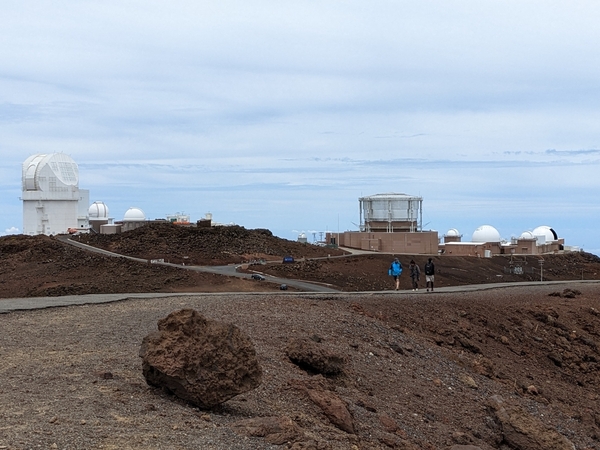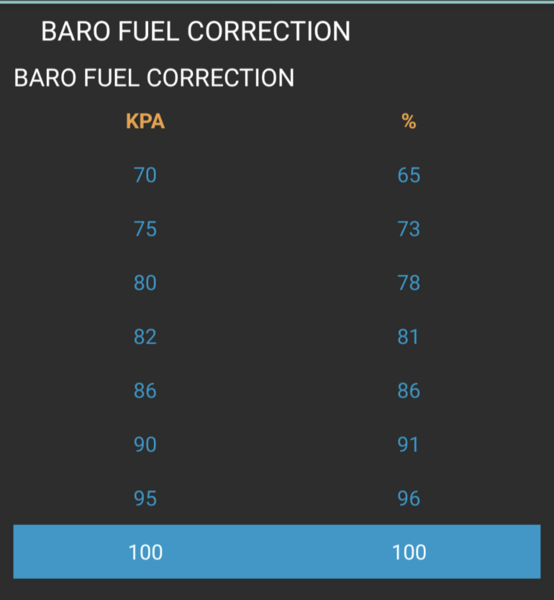Danny P and I were chatting the other day and he convinced me to re-tune the Speeduino ECU to use the throttle position sensor as the main load rather than the intake manifold pressure. The main reason is that we run individual throttle bodies and in general, Alpha-n (throttle position) gives a better fueling solution since the 4 throttle bodies open up the manifolds very quickly.
In any event, I have it a go and I'm really happy with the improvements in engine responsiveness. That said, it called for a trip up to the top of Haleakala to dial in the barometric tables that adds or subtracts fuel depending on your altitude.
Marianne agreed to man the laptop and reported the baro pressure, the target air:fuel ratios and the actual air:fuel ratios.
When the actuals drifted more than a point away from the target, she told me and I pulled over and modified the chart. After a few point changes, you could see the trend and I just filled in the best guesses down to 70 kPa (our usual reading at 10,000 ft). With just a few tweaks we made it to the top running the best ever. I'm really happy with the new settings.
A side benefit was the incredible amount of comments we got from other drivers, bicyclists, and pedestrians along the way. Somewhere around 30 folks expressed their fondness for the speedster (probably half went as far as saying they "loved" it.). Fun morning.
The trip up was fine. There was a bone chilling 40 mph wind blowing up over the ridge at the top, so we didn't stick around very long.
For the 0-1 people who might need it someday, here's the baro chart running from 100 kPa (sea level) to 70 kPa (10,000 ft) showing how much less fuel you need at each altitude.







